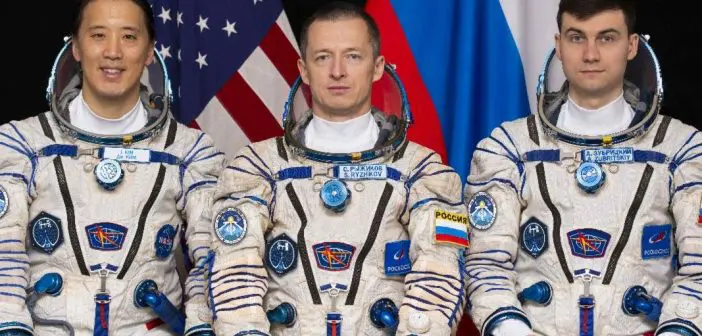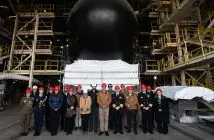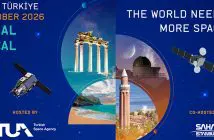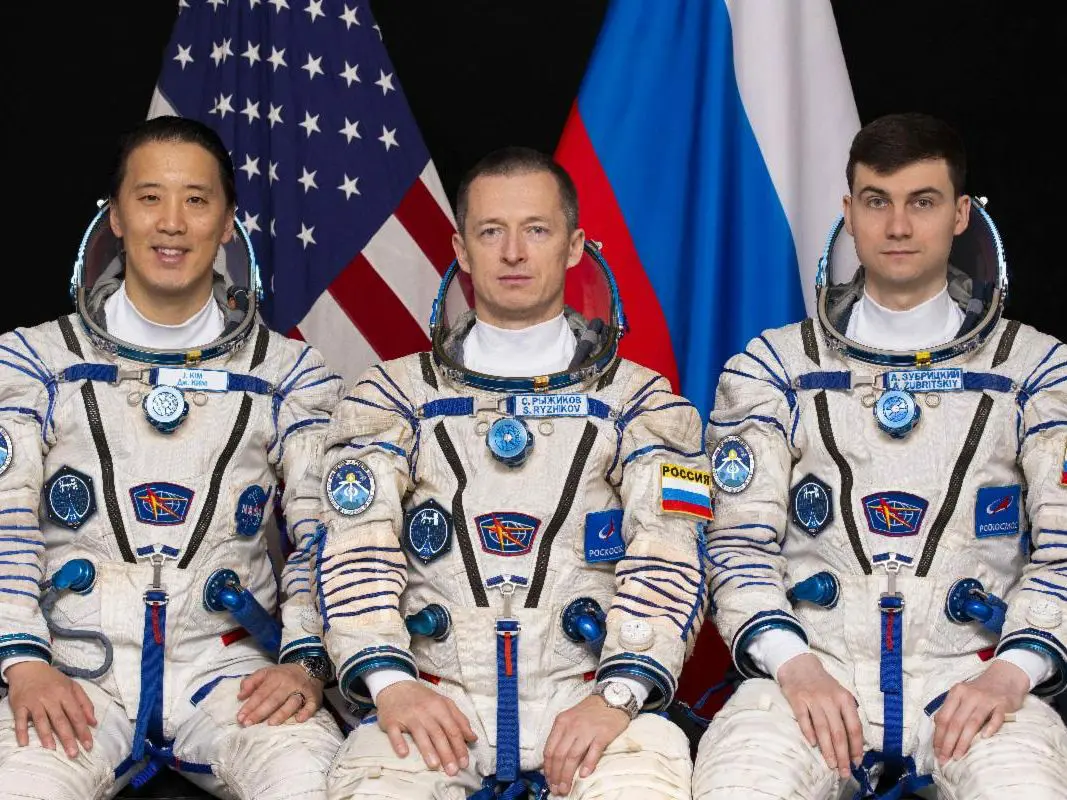
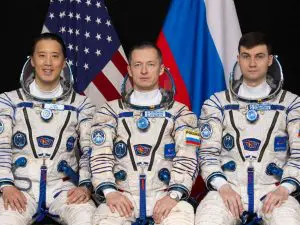
Image: The Roscosmos Soyuz MS-27 spacecraft will launch from the Baikonur Cosmodrome in Kazakhstan to the International Space Station with (pictured left to right) NASA astronaut Jonny Kim and Roscosmos cosmonauts Sergey Ryzhikov and Alexey Zubritsky. Credit: Gagarin Cosmonaut Training Center
NASA astronaut Jonny Kim will launch aboard the Roscosmos Soyuz MS-27 spacecraft to the International Space Station, accompanied by cosmonauts Sergey Ryzhikov and Alexey Zubritsky, where they will join the Expedition 72/73 crew in advancing scientific research.
Kim, Ryzhikov, and Zubritsky will lift off at 1:47 a.m. EDT Tuesday, April 8 (4:47pm AEST | 10:47 a.m. Baikonur time) from the Baikonur Cosmodrome in Kazakhstan.
After a two-orbit, three-hour trajectory to the station, the spacecraft will dock automatically to the station’s Prichal module at approximately 5:03 a.m. Shortly after, hatches will open between Soyuz and the space station.
Once aboard, the trio will join NASA astronauts Nichole Ayers, Anne McClain, and Don Pettit, JAXA (Japan Aerospace Exploration Agency) astronaut Takuya Onishi, and Roscosmos cosmonauts Alexey Ovchinin, Kirill Peskov, and Ivan Vagner.
The trio will spend approximately eight months aboard the orbital laboratory as Expedition 72 and 73 crew members before returning to Earth in December. This will be the first flight for Kim and Zubritsky, and the third for Ryzhikov.
For more than two decades, people have lived and worked continuously aboard the International Space Station, advancing scientific knowledge and making research breakthroughs that are not possible on Earth. The station is a critical testbed for NASA to understand and overcome the challenges of long-duration spaceflight and to expand commercial opportunities in low Earth orbit. As commercial companies focus on providing human space transportation services and destinations as part of a robust low Earth orbit economy, NASA is focusing more resources on deep space missions to the Moon as part of the Artemis campaign in preparation for future human missions to Mars.

